ere’s another quote from the Garry Winogrand TV programme I mentioned recently (and if you haven’t watched it yet, I’m sure you will find it of interest.)
“There isn’t a photograph in the world that has any narrative ability, any of them, they do not tell stories; they show you what something looks like… to a camera.”
Garry was of course right, but also wrong. Right from the point of view of making a photograph (almost certainly all he was interested in.) As he goes on to say “the thing has to be complete in the frame … it’s a picture problem, it’s part of what makes things interesting. A piece of time and space is well described, but not what is happening.”
But when we view all or most photographs we see them in a narrative manner. We supply a narrative context. And although that narrative may not be true to the time and space from which the photographer wrenched his moment, it does bear some relation to it. Although the photograph doesn’t determine the narrative, there has to be some kind of consonance between the image and it.
One of photography’s most famous images is of a man leaping from a plank in the Place de l’Europe in Paris, behind The Gare St Lazare in 1932. It’s ‘decisive moment‘ is because of our narrative completion with the splash of failed pride, although the picture itself is complete in a Winograndian sense in its frame (one of Henri Cartier-Bresson‘s few cropped frames.)
The set of pictures I took outside Holloway prison on Jan 16 have no claims to photographic fame, though they are perhaps a good illustration of being in the right place at the right time (and almost getting the exposure right.) Taken individually they could be anchored to a narrative in various ways, but as a sequence they tell more of a story.
Pauline Campbell’s daughter died in Styal prison in 2003. Sarah’s death led to her campaigning around the country on behalf of women who have died in prison – now more than 40 deaths since Sarah. After nearly four years of her campaigning the Home Office “finally admitted responsibility for the death of my daughter Sarah Campbell, including liability for breach of Sarah’s human rights under the European Convention on Human Rights.”
In January Pauline organised a protest to mark the death the previous month in Holloway of Jamie Pearce (later she found the prison authorities had spelt her name incorrectly – she was Jaime Pearce.) As a part of this she attempted to stop vans arriving at the prison with prisoners and talk to the drivers, and police were determined to prevent this picketing.
I took 6 frames of one incident as it happened and several afterwards which were related. Because of the sunlight coming more or less directly toward the camera (giving flare in some images) I was shooting using flash, and there was a variable delay between shots as the flash recharged. (Longer than usual as my SB800 had died and I was using the SB80DX, which is slower to recycle and less smart with the D200.) One of the minor advantages of digital is that is does record timings of pictures in the EXIF data, particularly pertinent in this case as I rename images on import to Lightroom including a sequential number – and in this case these are not in the correct order.
On Indymedia I published six, and they were also used in a centre page spread in ‘The News Line’, together with another picture from the event and my ‘Indymedia’ report. ‘The Big Issue (North)’ used a single image. Here they all are, although the times are all an hour out, as my camera was set incorrectly – it actually happened at around 15.34:
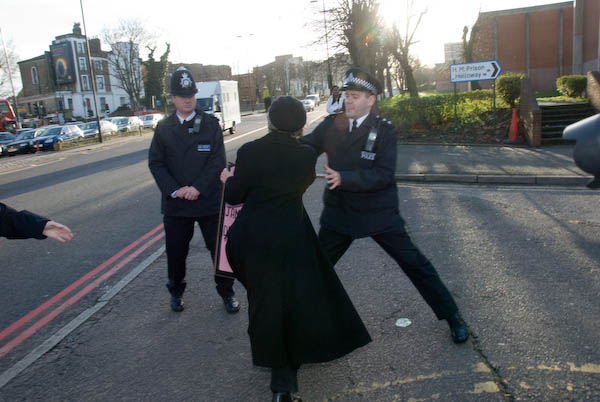
Frame 1. 14.34.28 Pauline sees the van approaching and tries to run through the police line…
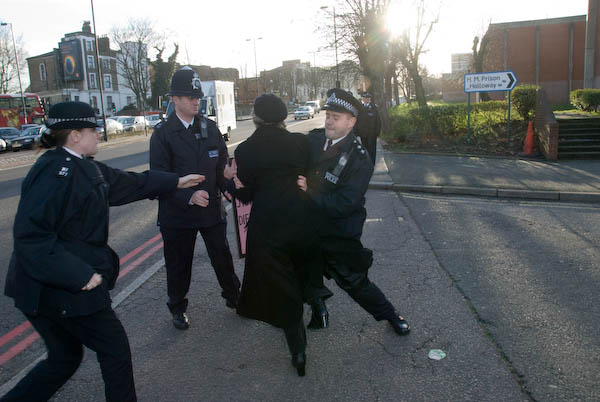
Frame 2. 14.34.28 … but is intercepted by the senior officer…
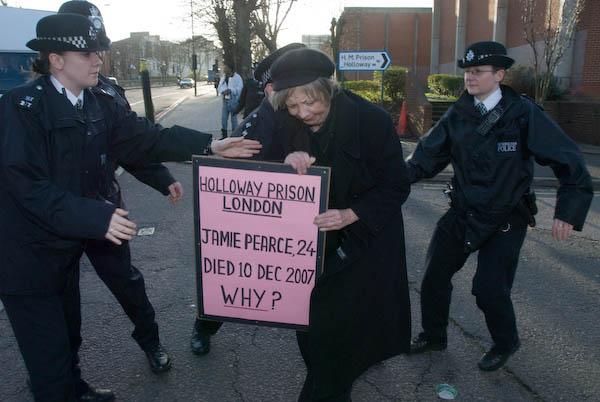
Frame 3. 14.34.30 … who starts to push her back, while a woman officer holds out a hand in front of her.
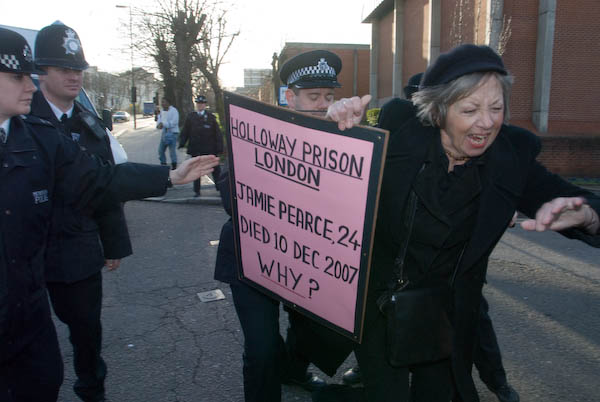
Frame 4. 14.24.31 Pauline falls towards my right
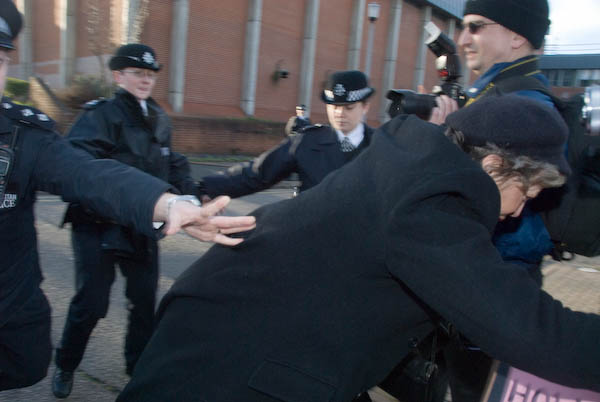
Frame 5. 14.34.31 … while I move round to show the hand pushing her…
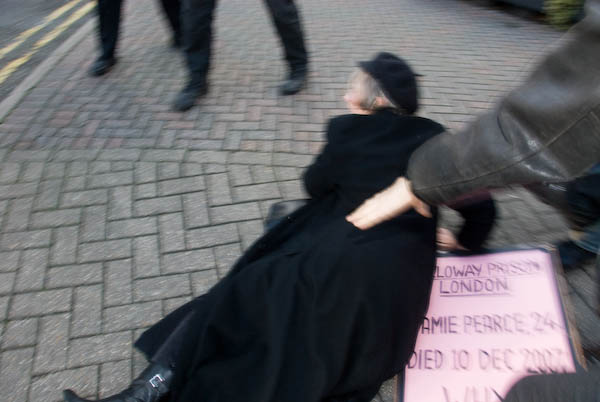
Frame 6. 14.34.33 … and she has landed on the pavement.
There should have been more than six images, but I was pushed me out of the way by police between the 5th and 6th images. I took a frame of her being helped on the ground, but wasn’t allowed tot really get where I needed to be, then I saw the officer who had pushed here, apparently reacting to what he had done, taking two pictures before he noticed and turned away.

Frame 8. 14.34.42

Frame 9: 14.34.42
No one picture really tells the story, though some suggest more than others. Taken together they are fairly convincing, in particular I think Frame 3, which shows that only one officer was pushing her – and another holds out her hand to try to stop her falling, and Frame 5 where I’ve moved round pretty fast to show the hand in the middle of her back.
The best picture – the most dramatic frame – is 4, shows Pauline from the front falling towards the camera, but clearly it doesn’t tell the whole story.
In many of your posts (this one for example) I like the way you discuss matters of photography – both the images, their context and the process – in an intelligent and critical manner using your own work as an example. Good stuff.